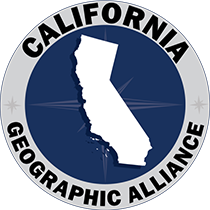By Roni Jones
#BioBlitz2014 at Golden Gate National Parks in San Francisco was an exhilarating and inspiring event for students, educators, scientists, and citizens. National Geographic Education staff started the week by spending Tuesday, March 25 at John Muir Middle School in Corcoran, California, just south of Fresno, to conduct a Schoolyard BioBlitz with 240 7th grade students. Over three hours, students visited three different sites in town and on campus to observe birds, insects, animals, and plants. JMMS is a Verizon Innovative Learning School and an Apple Distinguished School, and has implemented a 1:1 iPad ratio for students and teachers. With this technology, students were able to utilize the iNaturalist app to identify and document different species throughout the day. Students were most excited to observe owl pellets containing animal bones, feathers, and other indigestible matter. Information and video collected during the Schoolyard BioBlitz will ultimately be available for educators so they, too, can organize and conduct their own local species inventories.
At noon on Friday, March 25, BioBlitz 2014 was officially launched, although students and scientists had started collected data early that morning. The staff at Golden Gate National Parks, as well as Golden Gate National Parks Conservancy and the Presidio Trust, coordinated hundreds of naturalists, docents, birdwatchers, and other volunteers to work with more than 3,000 students throughout the day. Students were scattered throughout the Bay Area from San Mateo to the Marin Headlands to conduct inventories about what types of bird, reptile, mammal, plant and insect species were observed. It was amazing to see so many students actively involved in field science and engaged so fully with their local environment. The weather was spectacular and the students were also able to enjoy a large festival of hands-on activities at Crissy Field, in the shadow of the Golden Gate Bridge.
The public and scientific inventories continued into Friday night and Saturday morning, even though the weather turned stormy and wet. Volunteers returned to the field throughout the 24-hour period to inventory tide pools and identify nocturnal creatures. The first-ever inventory of the canopy of the redwood forest in Muir Woods was conducted. In total, 300 scientists, 3,000 students, and over 5,000 volunteers took part in this unique and exciting event.
Next year, #BioBlitz2015 will take place at Hawaii Volcanoes National Park, so make your vacation plans now to participate!




